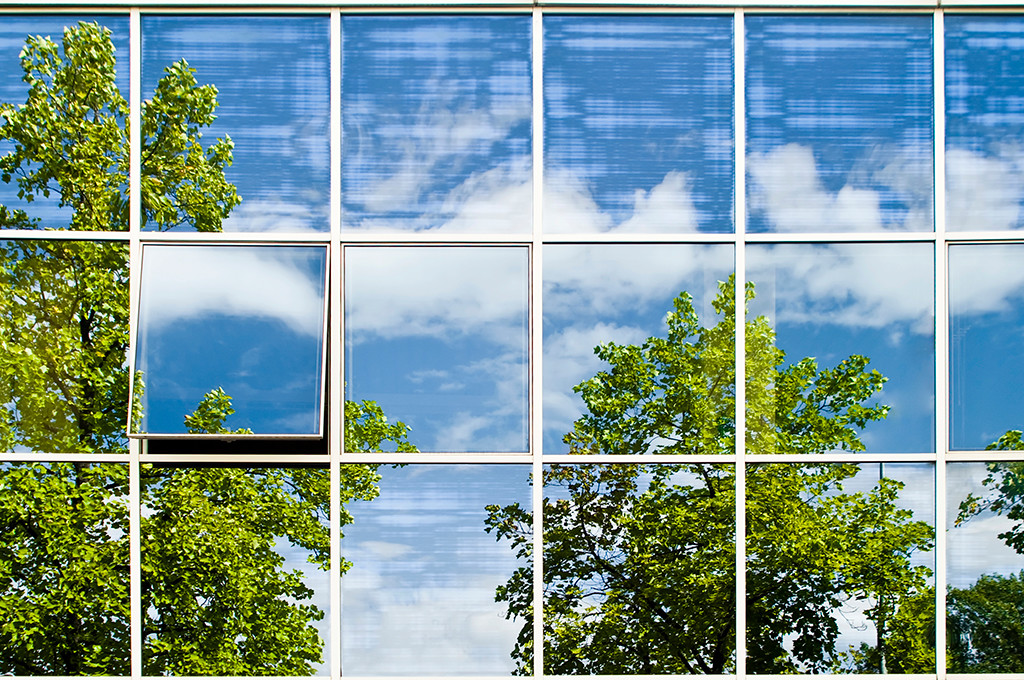Tenant and investor focus on wellness in buildings is inextricably linked to the greening of commercial real estate, particularly in institution-owned and -managed properties. This focus is helping to reshape the built environment. Though activists began advocating for more environmentally-friendly building construction and operation at least a generation ago, sustainability has started to emerge as a more mainstream property issue in the past decade. Certainly the desire to minimize the environmental impacts of buildings is the most significant driver of sustainability, but indoor environmental quality and its impact on tenants have taken on increasing visibility, as well.
The public and nonprofit sectors led the way in commissioning many of the early green buildings in the United States, motivated primarily by external environmental concerns. Corporate owners-users were the next major group of building owners to sign on to the green building trend. Their concerns were varied but generally more business-driven, including both direct factors, such as reducing operating costs or managing risk, and more indirect issues, such as positively influencing public opinion of the company and its products.
By 2008, the vast majority of major corporations had already adopted specific environmental initiatives. Many of the initiatives initially focused on energy efficiency, as surging energy prices and improving technology made more of these improvements cost-effective, whether for new construction or increasingly for retrofitting existing buildings. But over time, facility managers starting hearing from human resource directors and other corporate executives concerned with issues more central to core business operations: absenteeism, job satisfaction and worker productivity. Building design plays a role in all of these, and in turn all are highly correlated with efforts to promote health and wellness in the workplace through greener buildings.
With labor costs being such a large proportion of a firm’s overall operating costs, even small productivity gains can yield attractive financial returns. Thus, enlightened tenants should be motivated to pay a premium for space yielding tangible productivity gains, regardless of their energy saving and other environmental benefits. In fact, the most recent versions of Leadership in Energy and Environmental Design (LEED) certifications include more focus on the effects building components have on human health and the environment, primarily through what the U.S. Green Building Council (USGBC) calls “indoor environmental quality”:
Green buildings with good indoor environmental quality protect the health and comfort of building occupants. High-quality indoor environments also enhance productivity, decrease absenteeism, improve the building’s value and reduce liability for building designers and owners.
While the benefits of greener buildings were becoming more widely accepted, a significant barrier remained to moving to more sustainable construction and operation. Most commercial buildings are owned by non-occupying investors, and therein lies the problem: misalignment between owner costs and tenant benefits for investor owners. Many of the benefits of green buildings, at least for now, accrue to the user of the property. And absent special agreements, tenants typically do not compensate landlords for the full value of these benefits, if at all. Since government agencies and major corporations own a greater share of their facilities as compared with other types of tenants, these sectors have been better positioned to internalize the benefits from green buildings. Thus, in the earliest years of LEED, these owner occupants accounted for virtually all of the green building ownership, with private (non-occupying) developers holding just 3 percent of the stock. Within half a decade, that developer share of new green building certifications jumped to more than 25 percent and has been increasing ever since. As a result, we’ve seen an explosion in the number of renter-occupied green buildings.
One reason for this jump is that the industry figured out a way to better align the costs and benefits of more sustainable buildings through the concept of “green leases,” in which the key green features of the building and its operation are quantified in advance and the responsibilities for each party are outlined. For example, the owner might agree to build out to a certain enhanced level of sustainability in return for a higher rent, while the tenants agree to submeter (and thus reduce) their utility usage. These green leases are now widely used throughout the industry in the U.S. and globally.
More importantly, building owners have been motivated to construct and operate greener, healthier buildings. This move is being driven by a combination of both “carrot and stick” forces. The “sticks” are the more straightforward: Many municipalities mandate minimum levels of sustainability and/or energy efficiency, either as a condition for permits or to qualify for additional or expedited approvals. Other markets require owners to submit public reports on these issues.
But even without these regulations, developers have been moving forward toward greener construction due to market forces. Foremost among these is demand from tenants, which in turn is based on the same factors that motivate corporate and government owners-occupants, including lower operating costs, reduced absenteeism and greater productivity gains. Firms are also concerned with their reputation among current and prospective employees. Younger workers in particular, and especially highly valued creative and knowledge workers, frequently consider a firm’s record on social issues when making their employment choices. Beyond demonstrating environmental commitment, greener workplaces are also viewed as proof that the company cares about the health and satisfaction of its employees.
Finally, developers and building managers face sustainability demands from their capital providers, especially institutional investors like pension funds, which seek to own or support greener building portfolios. In some markets, tenant demand for green buildings translates into a rent premium, particularly when there are few available in the local market. But in many larger markets, tenant demand has forced a redefinition of Class A buildings: Sustainable buildings are now the standard while conventional buildings lease at a discount. Accordingly, investors seek to “greenproof” their portfolios to reduce their risks of holding obsolete buildings that are more expensive to operate and less desired by tenants. Greener buildings also enjoy a “halo effect,” as many investors seek more sustainable investments.
All of these factors have led to a greening of America’s building stock and subsequently healthier spaces for tenants. According to the USGBC, LEED-certified space now accounts for more than 5 percent of all commercial office buildings in the 30 largest U.S markets, representing more than a fifth of all office space in these markets, with a total of some 750 million square feet of space. And that’s just the office space—schools, apartment buildings, retail centers and other types of structures add billions more square feet of certified space. In all, some 3 billion square feet of space in more than 23,000 buildings is certified in the U.S. alone. The USGBC estimates that more than 4.3 million people live or work in LEED-certified buildings.
Pretty impressive for a program that took root only 15 years ago. Well done.

 Colliers Insights Team
Colliers Insights Team



 Anjee Solanki
Anjee Solanki